
The Cyperaceae are a family of graminoid (grass-like), monocotyledonous flowering plants known as sedges. The family is large, with some 5,500 known species described in about 90 genera, the largest being the "true sedges" genus Carex with over 2,000 species.

Arctotheca calendula is a plant in the sunflower family commonly known as capeweed, plain treasureflower, cape dandelion, or cape marigold because it originates from the Cape Province in South Africa. It is also found in neighboring KwaZulu-Natal.
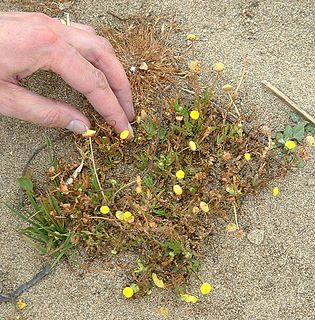
Cotula is a genus of flowering plant in the sunflower family. It includes plants known generally as water buttons or buttonweeds.
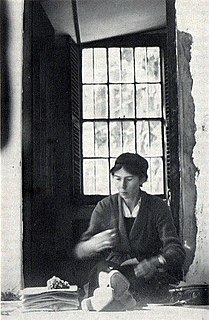
Margaret Rutherford Bryan Levyns was an eminent South African phytogeographer, botanist and taxonomist.

Ficinia is a genus of tufted or rhizomatous sedges. There are around 70 recognised species in Africa, three species that occur in New Zealand and a single species Ficinia nodosa that occurs in Australia.
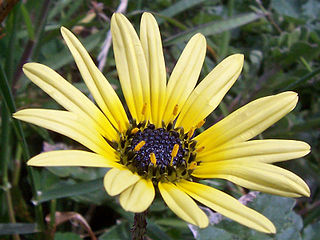
Arctotheca is a small genus of flowering plants in the aster family. They are annuals or perennials native to southern Africa.

Elytropappus is a genus of flowering plants in the sunflower family, native to southern Africa.
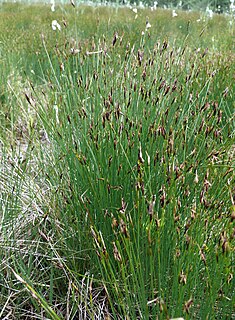
Schoenus is a genus of sedges. Plants of this genus mainly occur in Australia and Southeast Asia with some species widespread in scattered locations in Europe, Asia, Africa, and the Americas. Bogrush is a common name for these plants.

Cape Flats Sand Fynbos (CFSF), previously known as Sand Plain Fynbos, is a critically endangered vegetation type that occurs only within the city of Cape Town. Less than 1% of this unique lowland fynbos vegetation is conserved.

Paranomus is a genus of 18 species of flowering plants, commonly known as "sceptres", in the protea family. It is endemic to the Cape Floristic Region of South Africa.
Gwendoline Joyce Lewis (1909–1967) was a South African botanist.
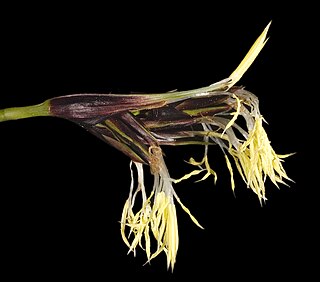
Tetraria is a genus of flowering plants in the sedge family, Cyperaceae, native to Tanzania, South Africa, Borneo, Australia and New Zealand.

World Flora Online is an Internet-based compendium of the world’s plant species.
Muraltia flanaganii is a plant species in the milkwort family (Polygalaceae) that is endemic to rocky flats about 5 metres (16 ft) above sea level in the southwestern part of Cape Province, South Africa. It is a perennial subshrub with a height between 6 and 20 centimetres which branches mainly at its base. The plant's clustered leaves are softly-haired and have sharp tips. It produces pink flowers which are also stalkless. It has been listed by the Red List of South African Plants as endangered since 2007 due to invasive species and habitat loss. It was first written about by Margaret Levyns in 1954 in the Journal of South African Botany. It was named "minuta", the latin word for "small", in reference to the plant's small size.
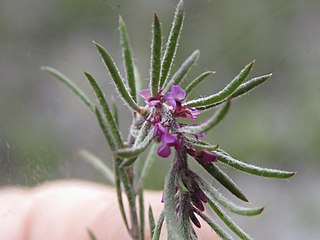
Muraltia bolusii is a plant species in the milkwort family (Polygalaceae). It is endemic to sandy coastal flatland with altitudes below 500 metres (1,600 ft) in Western Cape, South Africa. It was first described in 1954 by Margaret Levyns in the Journal of South African Botany. The Red List of South African Plants has listed it as endangered since 2007 due to habitat loss caused by nearby urban expansion, crop cultivation, and sand mining, as well as invasive species. Its population is decreasing.

Chironia is a genus of flowering plants in the family Gentianaceae, native to southern Africa. It is named after Chiron, the centaur known for his use of medicinal plants, as number of Chironia species are used in traditional medicines.

Lobostemon is a genus of flowering plants belonging to the family Boraginaceae.














